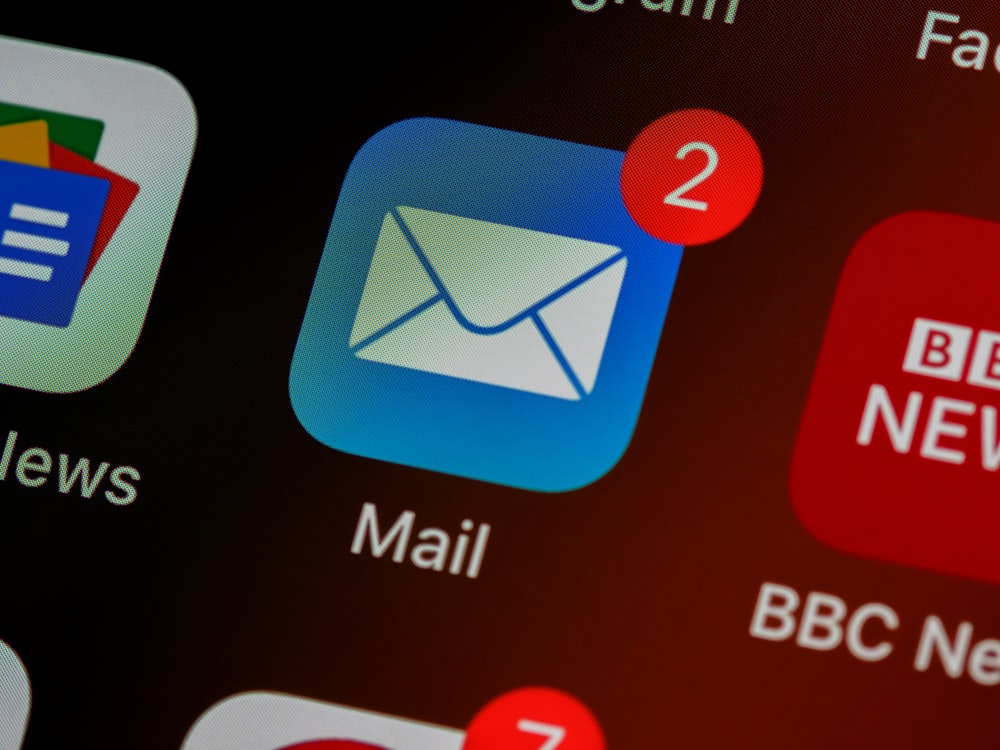The Art of Cold Emailing: Building Relationships Through Your Inbox
In the digital age, where face-to-face meetings have largely been replaced by virtual interactions, cold emailing has emerged as one of the most powerful tools in a business’s arsenal. Far from the impersonal spam messages that flood our inboxes, effective cold emails are strategic, personalized communications designed to start meaningful conversations and build genuine relationships.

Effective cold emails focus on starting relationships rather than making immediate sales. They deliver value first, demonstrate relevance to the recipient, and make small, easy-to-accept requests that open the door to further conversation.
Beyond the Sales Pitch: The True Purpose of Cold Emailing
At its core, cold emailing isn’t about making an immediate sale—it’s about opening doors to relationships that may lead to business opportunities down the line. This fundamental shift in perspective is what separates successful cold emailers from those whose messages are instantly relegated to the trash folder.
“The first cold email should never ask for too much. It’s like walking up to a stranger at a networking event and immediately asking them to invest in your company. That’s not how relationships work.”
— Jessica Michaels, Email Marketing Expert
Instead, the most effective cold emails position themselves as the beginning of a potentially valuable conversation. They offer something of value, demonstrate genuine interest in the recipient, and only make small, reasonable requests that are easy to say yes to.

The Anatomy of an Effective Cold Email
Let’s break down the essential components that make a cold email work:
1. A Compelling Subject Line
Your subject line is the gatekeeper of your email. If it doesn’t generate interest, nothing else matters. The best subject lines are:
- Brief (under 50 characters)
- Specific rather than generic
- Intriguing without being clickbait
- Personalized when possible
Examples of strong subject lines include:
- “Question about [specific project they’re working on]”
- “[Mutual connection] suggested we connect”
- “Thoughts on your recent [article/interview/achievement]”
Test variations of your subject line with a small sample of your audience before sending to your entire list. Even minor changes in wording can significantly impact open rates.
2. Personalization That Goes Beyond {{First_Name}}
True personalization demonstrates that you’ve done your homework and are reaching out to this specific person for a reason. This might include:
- Referencing recent content they’ve published
- Mentioning a specific achievement or company milestone
- Commenting on a shared interest or background
- Noting a business challenge they might be facing based on industry research
This deeper level of personalization signals respect for the recipient’s time and establishes relevance immediately.

3. Establishing Credibility Quickly
Within the first few sentences, you need to establish why the recipient should continue reading. This might include:
- A mutual connection
- Relevant credentials or experience
- A specific result you’ve achieved for similar companies
- An insight that demonstrates your expertise in their space
Without this foundation of credibility, even the most personalized email may fail to generate interest.
4. Value-First Approach
Before making any request, focus on what you can offer. This might be:
- Insights specific to their business challenges
- A resource, tool, or piece of content they might find useful
- An introduction to someone in your network
- Feedback on a specific initiative they’re undertaking
By leading with value, you shift the dynamic from purely transactional to potentially mutually beneficial.
Offer a custom analysis of their website's performance with specific improvement suggestions
Share a new trend or finding from recent research that directly impacts their business sector
Offer to introduce them to someone in your network who could help solve a specific challenge
Share a template, checklist, or tool that addresses a specific operational challenge
5. A Clear, Low-Friction Call to Action
Your first email should have a minimal ask that’s easy to respond to. Good examples include:
- “Would a 15-minute call next Tuesday work to discuss this further?”
- “Is this something your team is currently focusing on?”
- “Would you like me to send over that case study I mentioned?”
Avoid asking for lengthy meetings, detailed proposals, or significant commitments in your initial outreach.

Crafting Cold Emails That Reflect Your Brand Voice
While the structure above provides a framework, the tone and voice of your cold emails should align with your brand identity. A legal consulting firm will naturally use different language than a creative agency or a tech startup.
“Your cold emails should feel like an extension of how you’d communicate in person. If your brand is conversational and approachable, your emails should reflect that same energy. If your brand is more formal and authoritative, maintain that consistency.”
— Mark Robertson, Communication Consultant
This authenticity not only strengthens your brand identity but also sets the right expectations for how communication will continue if the relationship develops.
The Psychology of Effective Cold Outreach
Understanding the psychological factors that influence response rates can significantly improve your results:
Reciprocity
When you provide something of value without asking for anything in return, people naturally feel inclined to reciprocate. This might be as simple as sharing an insight specific to their business before making your request.
Scarcity and Exclusivity
People value opportunities that are limited or exclusive. Phrases like “I’m reaching out to a select few companies in your industry” or “We only have capacity to take on three new clients this quarter” tap into this psychological principle.
Social Proof
Humans look to the actions of others to determine what’s correct. Mentioning other recognized companies you’ve worked with or results you’ve achieved for similar businesses leverages this tendency.
Authority
Demonstrating expertise in a specific area establishes you as an authority, making recipients more likely to value your insights and consider your proposals.
Liking
People prefer to do business with those they like and perceive as similar to themselves. Finding genuine common ground can significantly increase response rates.
When mentioning other companies as social proof, choose those most similar to your prospect's business in terms of size, industry, or challenges. This makes it easier for them to see themselves achieving similar results.
A/B Testing: The Key to Cold Email Optimization
Even the most carefully crafted cold emails can benefit from systematic testing. By creating variations of your emails and tracking which versions perform better, you can continuously refine your approach.
Elements worth testing include:
- Subject lines
- Opening sentences
- The length and structure of your email
- Different value propositions
- Various calls to action
- Sending times and days
Remember that what works for one audience may not work for another, so testing should be an ongoing process rather than a one-time effort.

Following Up: The Art of Persistence Without Pestering
The reality of cold emailing is that most initial emails go unanswered. This isn’t necessarily rejection—it’s often simply a reflection of the recipient’s busy schedule or full inbox.
A thoughtful follow-up sequence can significantly increase your overall response rate:
- First follow-up: 3-4 days after the initial email, keeping it brief and referencing your original message
- Second follow-up: 7-10 days later, providing additional value or a new insight
- Third follow-up: 2-3 weeks later, taking a different angle or offering a different type of value
- Final follow-up: 1 month later, with a “closing the loop” message that makes it easy to respond
Throughout your follow-up sequence, maintain a respectful, non-pushy tone. Each message should provide additional value rather than simply asking “Did you see my last email?”
About 80% of successful sales require at least five follow-ups, yet 44% of salespeople give up after just one follow-up. Persistence with value in each message is key to breakthrough.
The Role of Automation in Relationship Building
While technology allows us to automate much of the cold emailing process, it’s essential to use these tools wisely. Automation should handle the repetitive tasks (like scheduling follow-ups or tracking opens) while allowing for the human elements that build genuine connection.
Good candidates for automation include:
- Scheduling follow-ups at predetermined intervals
- Tracking open and response rates
- A/B testing different versions
- Moving prospects through different sequences based on their engagement
However, aspects like personalization, responding to replies, and adapting your approach based on new information about the prospect should remain hands-on.

Legal and Ethical Considerations in Cold Emailing
Effective cold emailing isn’t just about getting results—it’s about doing so in a way that respects both legal requirements and ethical standards:
Legal Compliance
Depending on your location and that of your recipients, different regulations may apply:
- CAN-SPAM Act (US): Requires honest subject lines, identifies the message as an ad, includes your physical address, and offers an opt-out method
- GDPR (EU): Sets stricter standards, generally requiring consent before sending marketing communications to individuals
- CASL (Canada): Requires consent, identification information, and an unsubscribe mechanism
Ethical Practices
Beyond legal requirements, ethical cold emailing includes:
- Being transparent about how you obtained someone’s contact information
- Respecting opt-out requests immediately
- Not using misleading subject lines to boost open rates
- Targeting only those who genuinely might benefit from your outreach
Always include a clear, one-click unsubscribe option in every email. This isn't just a legal requirement in many jurisdictions—it's a courtesy that respects the recipient's agency and actually improves your sender reputation.
Measuring Success: Beyond Open and Response Rates
While open and response rates are the most commonly tracked metrics, truly effective cold email campaigns should be measured by:
- Meeting conversion rate: How many emails lead to actual conversations
- Opportunity conversion: How many of those conversations turn into business opportunities
- Revenue generated: The ultimate measure of campaign effectiveness
- Relationship quality: The long-term value of the relationships initiated through cold outreach
By focusing on these deeper metrics, you can refine your approach to optimize for meaningful business outcomes rather than simply maximizing responses.
Conclusion: Cold Emailing as Relationship Cultivation
When approached strategically, cold emailing is less about “selling” and more about starting conversations that may develop into mutually beneficial relationships. By focusing on providing value, demonstrating relevance, and respecting the recipient’s time and autonomy, you transform cold outreach from an unwelcome interruption into a potentially valuable connection.
The most successful cold emailers view each message not as a one-off sales attempt but as the first step in a potentially long-term relationship. With this mindset, each component of your email—from the subject line to the signature—becomes an opportunity to demonstrate your understanding of the recipient’s world and the value you might bring to it.
As digital communication continues to evolve, those who master the art of meaningful cold outreach will consistently find doors opening to new opportunities, partnerships, and business growth.



